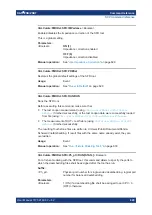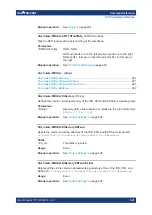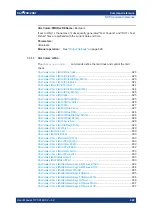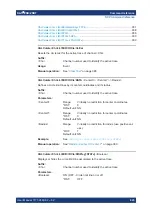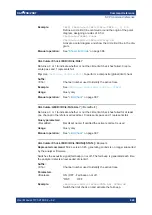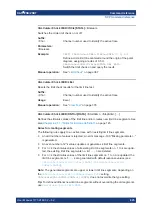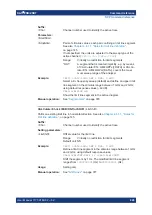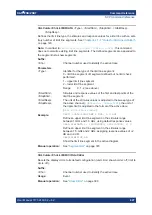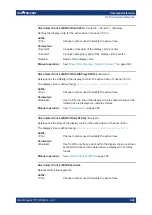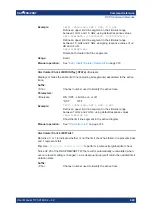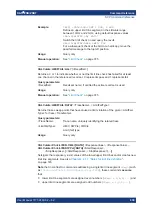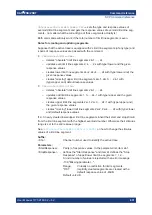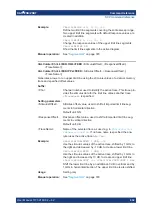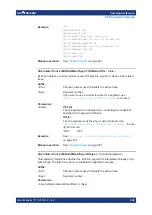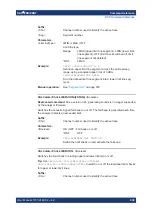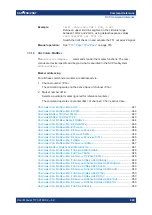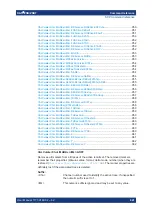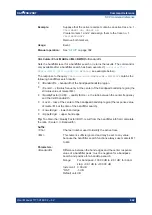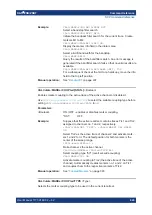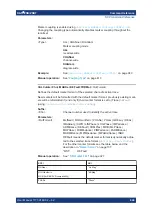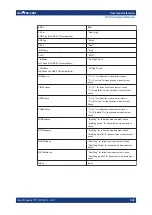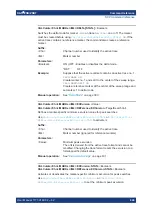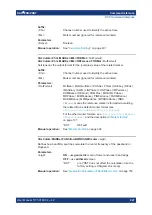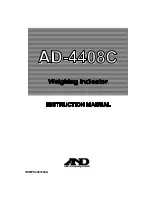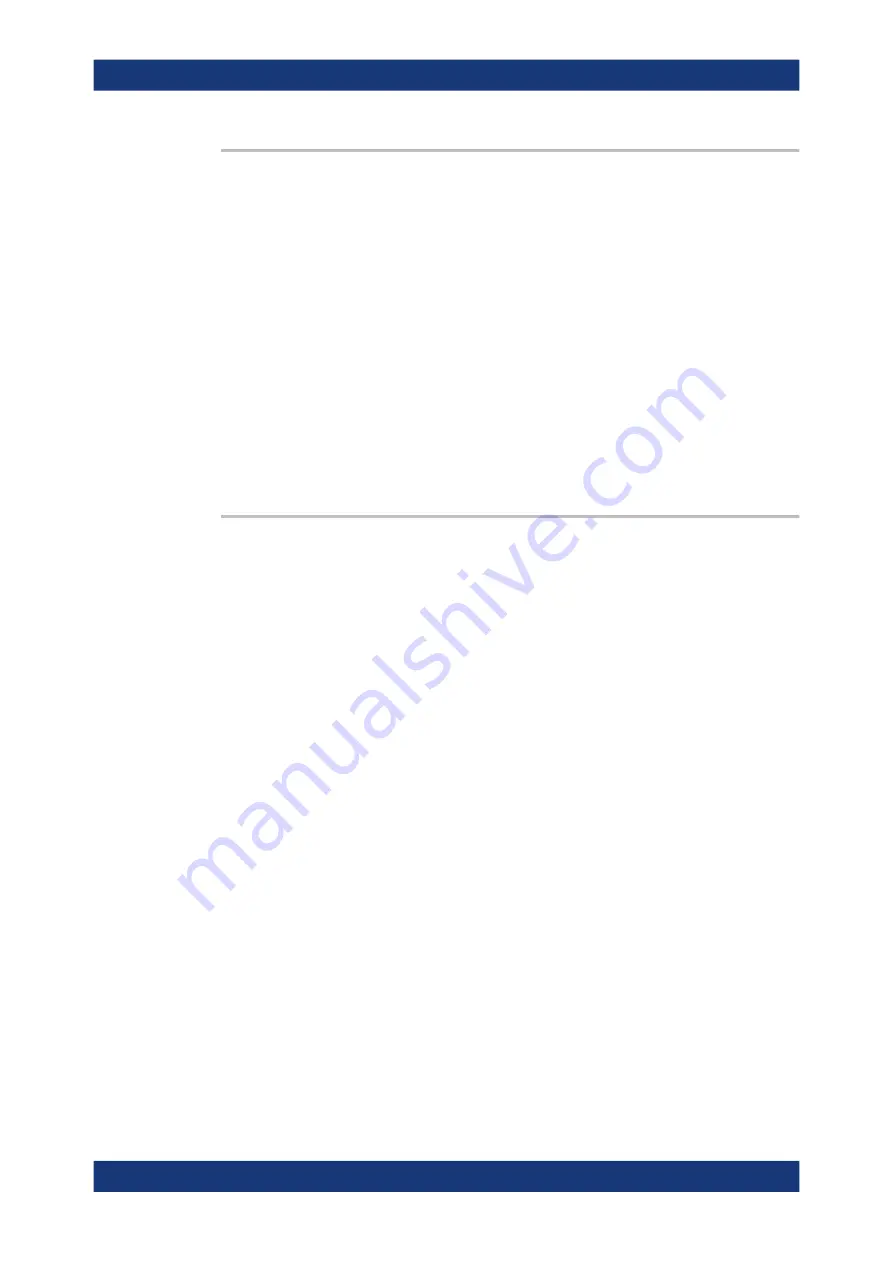
Command reference
R&S
®
ZNB/ZNBT
933
User Manual 1173.9163.02 ─ 62
CALCulate<Chn>:LIMit:LOWer:SHIFt
<LimShift>
CALCulate<Chn>:LIMit:UPPer:SHIFt
<LimShift>
These commands shift all lower and upper limit line segments assigned to the active
trace in vertical direction. Both commands shift
all
limit lines; they have the same func-
tionality. See also
Chapter 4.4.1.1, "Rules for limit line definition"
Suffix:
<Chn>
.
Channel number used to identify the active trace
Setting parameters:
<LimShift>
Response offset value for all limit line segments.
Range:
Virtually no restriction for limit segments
Default unit: NN
Example:
See
CALCulate<Chn>:LIMit:LOWer:FEED
Usage:
Setting only
Manual operation:
See
CALCulate:LIMit:POINts:LOWer?
<TraceName>
CALCulate:LIMit:POINts:UPPer?
<TraceName>
Reads the effective lower/upper limit points from a limit line test for an arbitrary (not
necessarily the active) trace, referenced by its name <TraceName>.
"Effective“ means:
●
Only points within the sweep range and only active limit checks are considered.
●
Disabled limit line segments (
CALCulate<Chn>:LIMit:SEGMent<Seg>:TYPE
●
Both linear/logarithmic interpolation and limit line formulae are supported.
●
If there are overlapping limit line segments, only the tighter limit is reported.
Query parameters:
<TraceName>
String parameter containing the trace name
Return values:
<Data>
Limit points, either in ASCII or block data format, depending on
the current
One limit point = one value (y-axis) per sweep point (x-axis).
“No limit point” is reported as Not a Number, which is the string
“-NAN(IND)” in ASCII and a float testing true for “isnan”.
If there is no effective limit point, an empty response is returned.
SCPI command reference


